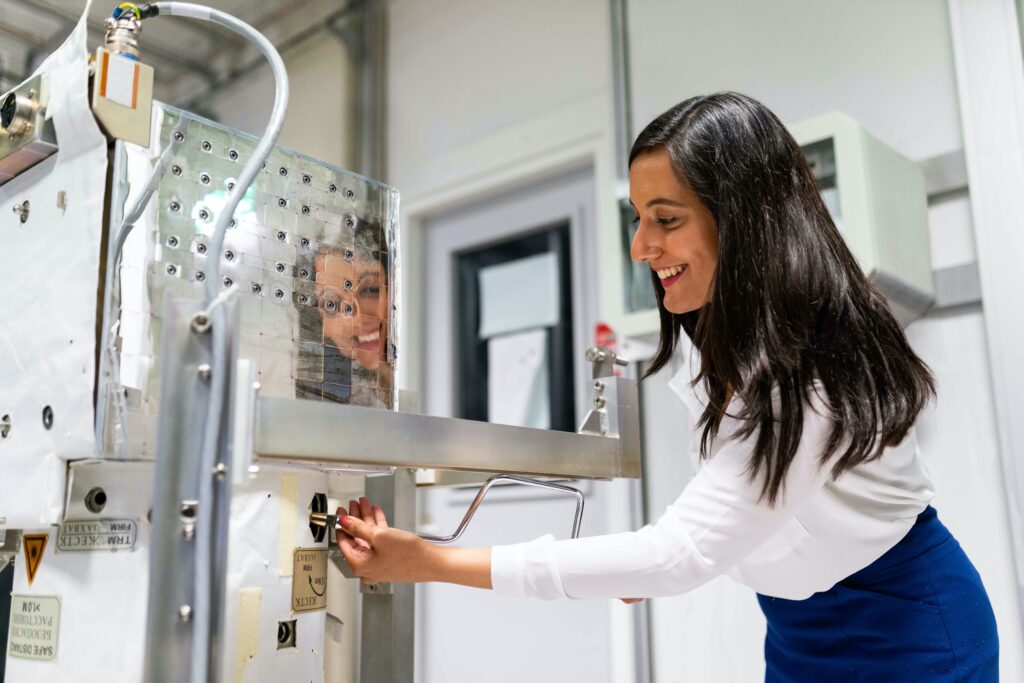Human activities are by far one of the leading causes of climate change. The increase in temperatures across the globe is changing precipitation patterns, causing sea levels to rise, and so on. The bottom line is that the entire world is at risk.
Changes in climatic conditions have diverse effects that affect us daily. Although unintentional, we are still damaging the environment, and it is up to us to fix it.
Thanks to modern technology, this now becomes possible and thus more feasible. Read on to learn how smart technologies can help reduce our carbon footprint and make our planet cleaner and safer for future generations.

Smart Home Devices
Smart technology enables home appliances to improve energy efficiency. For example, water heaters use tracking machines to monitor hot water usage in your home. It can adjust its heating time to suit your preference or schedule. It preserves energy that the heater uses when it has to keep water hot throughout.
Devices like thermostats monitor your behavior and adjust automatically. It enables you to turn on or off the heater or air conditioner from wherever you are. Isn’t that amazing? In addition, smart plugs or light bulbs automatically turn off when there is no one in the room.
Having a smart home is about using energy-efficient appliances, heating, and lighting. Ventilation with natural sunlight or the sun’s energy helps keep you warm and warms your water.
According to the US Environmental Protection Agency, they found that by using programmable thermostats, consumers can reduce energy usage by 10-30%.
Smart homes also reduce water consumption. They are built in such a way that minimizes earthworks and protects native plant life.
It is important to employ the most energy-efficient practices in homes. People need to take personal responsibility and do their part in reducing their carbon footprint.
Carbon Capturing
Activities like manufacturing contribute 30% of toxic greenhouse gas emissions. Various products, for example, paper, coal, and oil, come from carbon. Releasing carbon dioxide into the atmosphere is hazardous to our planet and people’s health.
With carbon capturing, we can reduce our carbon footprint. We can pull back carbon from the air and separate it from other gases. There are various capture sites next to power plants that emit carbon from burning fossil fuel. They remove carbon from the atmosphere by separating it from other gases.
Additionally, smart technology enables companies to capture carbon. For example, operating plants in Canada remove tons of carbon from the air. They then convert it to clean-burning fuels. The plants have large fans that suck air and direct it to special devices that separate carbon from other gases. The result is a carbon-free atmosphere.
Artificial Intelligence

Artificial intelligence (AI) has been reducing our carbon footprint. The greatest strength of AI is in the ability to learn by collecting data from the environment, identifying connections, and then providing advice based on its findings.
AI-powered data engineering allows companies to automatically track their carbon footprint. They can arrange to collect data from every step of the value chain, including materials and component suppliers, transporters, and downstream users of their products. AI can mine data from satellites as well. AI is then able to generate approximations of missing data and estimate the level of certainty of the results.
Predictive AI can also estimate future emissions from a company’s carbon footprint based on current emission reduction efforts, new carbon reduction strategies, and future demand. Thus, they can set, adjust, and achieve reduction targets more accurately.
Not to mention, prescriptive AI and optimization can help improve efficiency in production, transportation, and other areas. As a result, AI can help companies reduce carbon emissions and cut costs.
Climate scientists are using AI to predict climate change and safeguard our seas from overfishing. For instance, big corporations like Microsoft are backing AI-powered climate research. One of them is exploring how hurricanes affect and destroy forests. When trees are knocked down by 100 mph winds, they cease to trap CO2 via photosynthesis. Instead, they decay and release CO2. To avoid that, they are identifying hurricane-resistant species to reduce greenhouse gas emissions.
In the very same project, researchers used high-resolution pictures of rainforest canopies after a hurricane to identify surviving tree species. They also use AI to examine and classify post-hurricane forest composition. Then, the data is used to protect valuable carbon-capturing trees from destructive storms.
Final Thoughts
With more advances in smart technology, there’s no doubt people will find ways to use it for the greater good. By utilizing cutting-edge tech that’s available, people can cut down their carbon footprint. Technology plays a major role in making our planet a safe place to live in for generations to come.